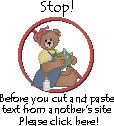Epilepsy Facts & First Aid

Epilepsy is a syndrome that is characterized by a tendency towards recurrent seizures. In plain terms that means that epilepsy isn't just one disease, like diabetes or the measles. It is a whole bunch of conditions that all involve seizures. Epilepsy can be the person's main condition, or it can be associated with other conditions such as autism or schizencephaly. What makes a person epileptic is that they have seizures. Pretty logical, isn't it?
So what's a seizure? Well, I like to think of them like a thunderstorm inside a person's brain. A seizure happens when excess electricity is discharged in the brain, kind of like a lightning strike. That discharge can cause a person to just blank out for a few seconds or it can cause disorientation, mild twitching or convulsions and loss of consciousness. Here's how you can help if a person has a seizure.

First Aid for Convulsive Seizures
- Stay calm. Once a seizure has started it cannot be stopped, so just let it run its course.
- Note the time. If a seizure lasts more than 5 minutes you will need to call for medical assistance.
- Let it happen. Do not try to restrain the person or put anything into his/her mouth. Allow the person space and if possible loosen any tight clothing.
- Remove hazards. Move furniture and dangerous objects out of the way instead of trying to move the person. Only move the person if there is a danger which cannot itself be removed.
- Make the person comfortable. Once the convulsions subside turn the person over on his/her side to help breathing. If possible place a pillow or something soft under his/her head. Stay close by until the person regains consciousness.
- Be reassuring. A person recovering from a convulsive seizure may not know what has happened. They may be disoriented or afraid, or unable to speak for a few minutes. Reassure the person that they are all right and tell them what has happened. Encourage them to rest, because having a convulsive seizure can be like running a whole marathon in under five minutes!
- Call 911. Call for medical assistance only if a convulsive seizure lasts more than 5 minutes or if another seizure starts before the person has recovered. Look for a Medic-Alert bracelet or a wallet card that can help medical personnel to get information about the person's condition and medications.

First Aid for Non-Convulsive Seizures
We often think of epileptic seizures as the kind where a person falls to the ground and shakes, losing consciousness. That is a convulsive seizure, which we used to call a grand mal. There are dozens of kinds of seizures, though, and they all look and feel a little different from one another.
Non-convulsive seizures may cause odd, repetitive movements. In some people they may cause a momentary loss of consciousness but not necessarily falling down. In fact, a person can have a seizure while walking around! There may strong emotions or the person may see or hear things that others cannot. This is because an area of the brain associated with sensation or emotion is involved in the seizure. This can be disorienting. Here's how to help someone having a non-convulsive seizure.
- Just let it happen. As with a convulsive seizure, a non-convulsive seizure needs to run its course. The best thing you can do to help the person having the seizure is to remain alert and to allow their movements to proceed naturally.
- Remove hazards. If the person is moving around try to gently guide him/her away from any hazards, but do not fight the person is he/she insists.
- Be reassuring. Some types of seizures can induce feelings of fear or sadness, or can cause the person to feel lost. This will pass after the seizure is over; in the meantime reassure the person that he/she is all right.
- Stay calm. Seizures often spread from one area of the brain to another, so a non-convulsive seizure can easily lead to a convulsive seizure. If this happens don't worry. Just follow the first aid for convulsions.

Epilepsy Links
Epilepsy Canada
A national site with links to many provincial groups. Lots of great info, including epilepsy trivia!
Child's Guide to Epilepsy
For children, but the explanations can be helpful to adults as well. The outlook is very positive.
Epilepsy & Autism
This is a short description of seizure disorders at a Canadian site whose focus is autism. Lots of useful links, and of course tons of good info on autism.
Papi's Encyclopedia of Medicine - Epilepsy
From the Essaim site, a good discussion of epilepsy that includes encouragement for epileptic women who hope to have children and to breastfeed.
Association Québecoise de l'Epilepsie
This site has a link for its English content but it's not very much. Good for folks who can read French!


[Privacy Policy] [Content Rating]
All content (design, graphics, text, coding) unless otherwise noted © Greenwood Willow (KM Matton) 2002. Graphics on this page courtesy of B8 Graphics. Logos and dynamic content used with permission. Canadian flag public domain. Please do not copy anything from this site without written permission.
Disclaimer: The content (e.g. banners) added by Geocities/Yahoo is beyond my control. Its presence on this site is not an endorsement of any product or service.






